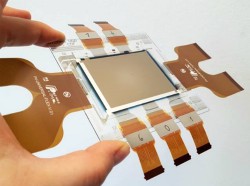A head-start for Seagate in next-generation storage devices
Kicked off in 2013, NU-MATHIMO is essentially an attempt to create bridges between academia and industry, with a view to accelerating innovation in magnetic recording data storage devices. The project brought together data storage company Seagate with the universities of Duisberg-Essen and Uppsala. It used their complementary expertise to study the properties of magnetic materials and, most importantly, help enable higher moment (or saturation flux density) than seen in state-of-the-art storage devices. This is far from a walk in the park: For decades, engineers have believed that saturation flux density was limited to 2.4 Tesla, and they have been struggling to achieve higher values. In the meantime, the clock is ticking. As Mark Gubbins, Design Manager at Seagate and coordinator of the project, explains, “HAMR hard drive technology will be needed in the next several years to provide increased data storage density and storage capacity.” Should anyone be able to raise this value by, say, 10 %, the door would be opened to storage products with higher area density performance. Nanoscale engineering of magnetic thin films is considered as the best approach to achieve this, and knowledge transfers within the NU-MATHIMO project are hoped to eventually allow for the development of such films – thereby boosting the performance of future product recording heads. “As materials and devices in the recording transducer and disk approach magnetic performance limits, Heat Assisted Magnetic Recording (HAMR) technology is needed. It will introduce higher stability disk materials that now require heat in addition to high magnetic fields in order to record information to the disk. With improved magnetic materials and HAMR technology, we can enable the future growth of hard drive storage capacity,” Gubbins explains. NU-MATHIMO has been training researchers to this end, as well as improving the portfolio of magnetic materials available to Seagate’s technology development team. “On the training front, Seagate has hired three personnel who were directly funded under NU-MATHIMO,” Gubbins says. “Also, progress has been made in the design of recording transducers using rare earth materials, materials that are generally regarded as difficult to integrate”. All in all, NU-MATHIMO has opened the debate on possible materials with higher magnetic moment. Whilst more academic work will be required to raise interest within industry, academic activity has been increased, and the availability of trained researchers is a big enabling factor for HAMR technology at Seagate's UK site. “Stronger links between Seagate and the partner universities has already lead to several collaborative activities between the groups,” Gubbins concludes. “This is likely to be sustained, and it means that, looking forward, Seagate will now benefit from a wider network of partners outside the UK. New materials perspectives gained in the project could lead to the implementation of new material technologies in future hard drive transducer designs.”







